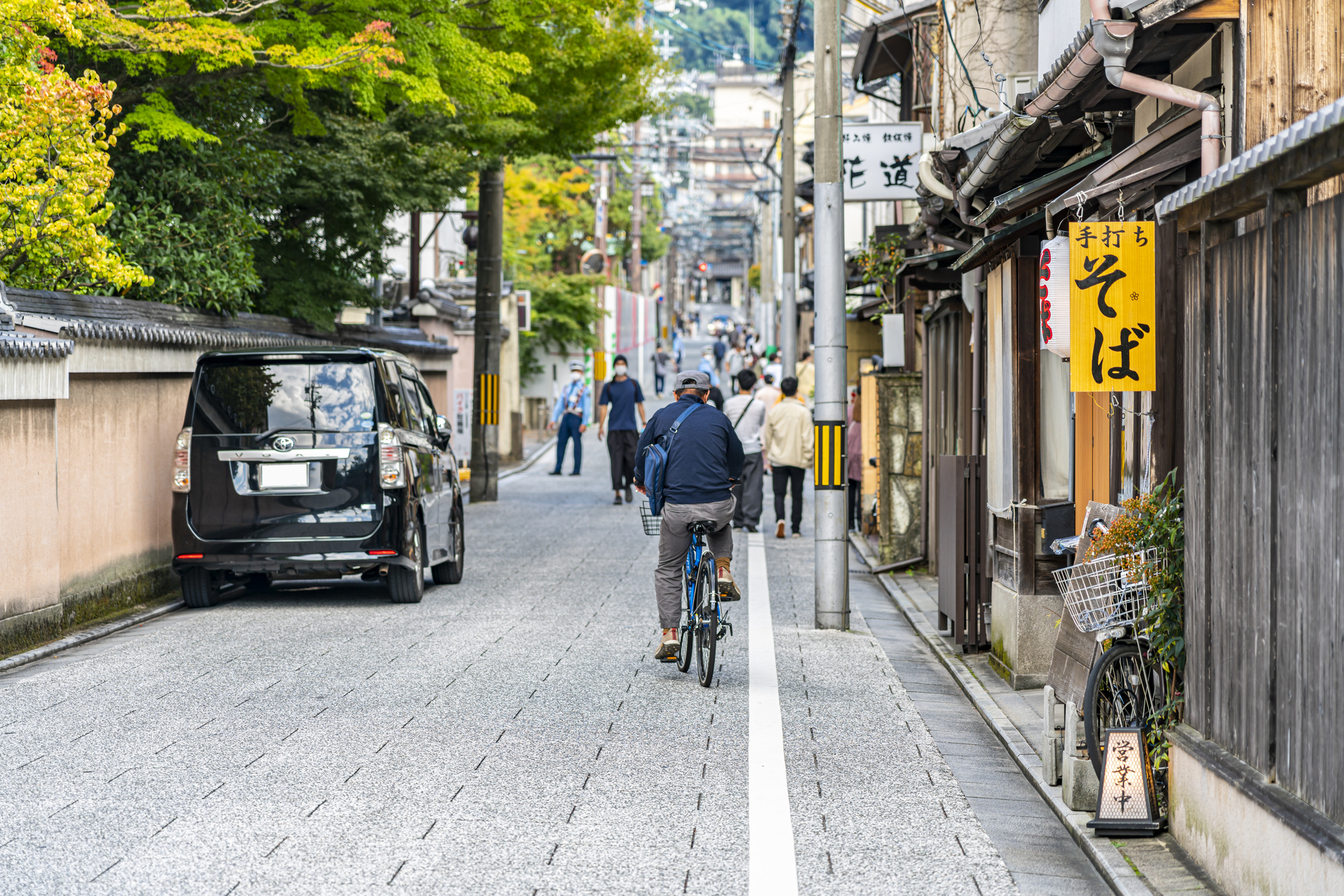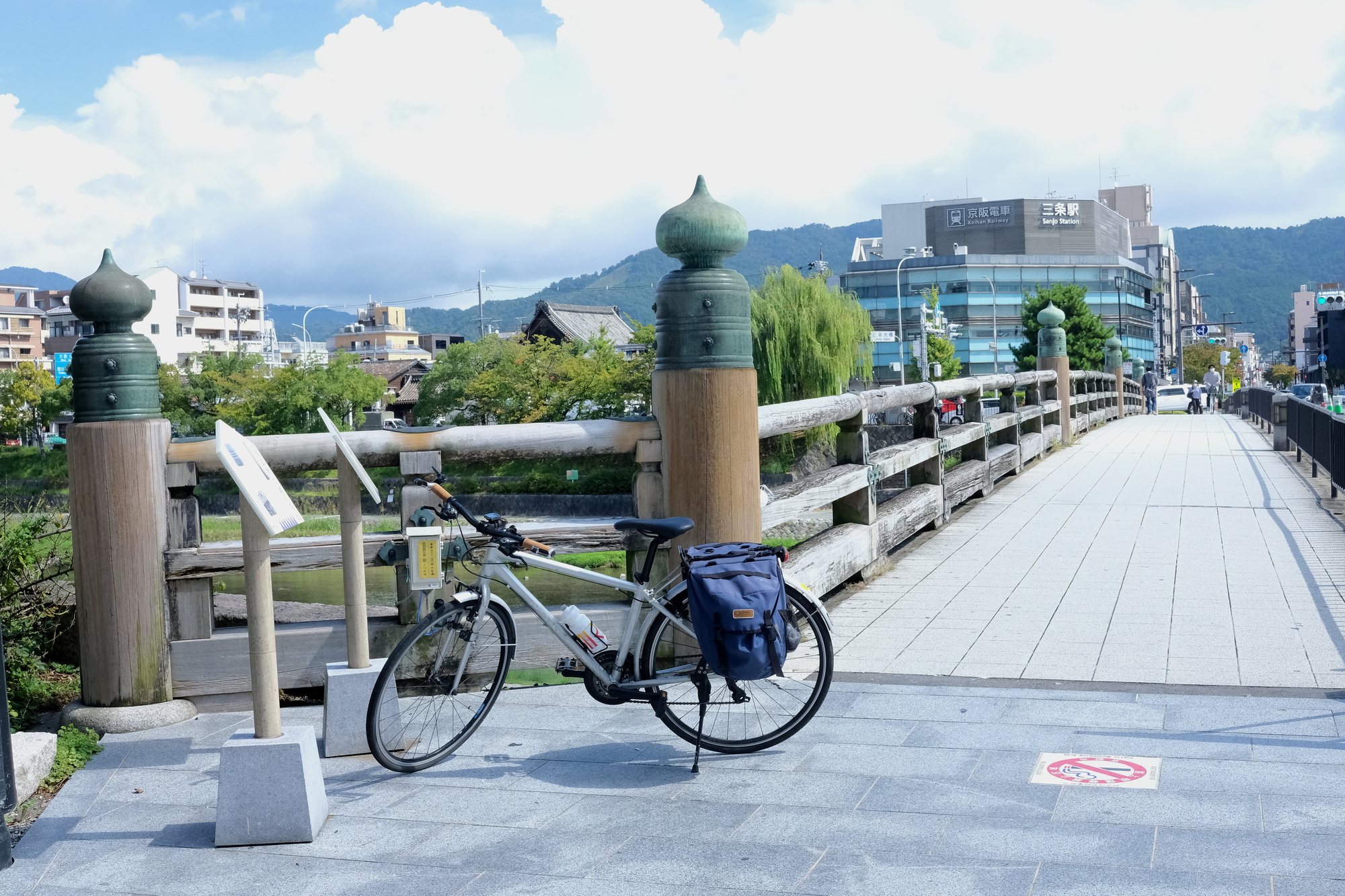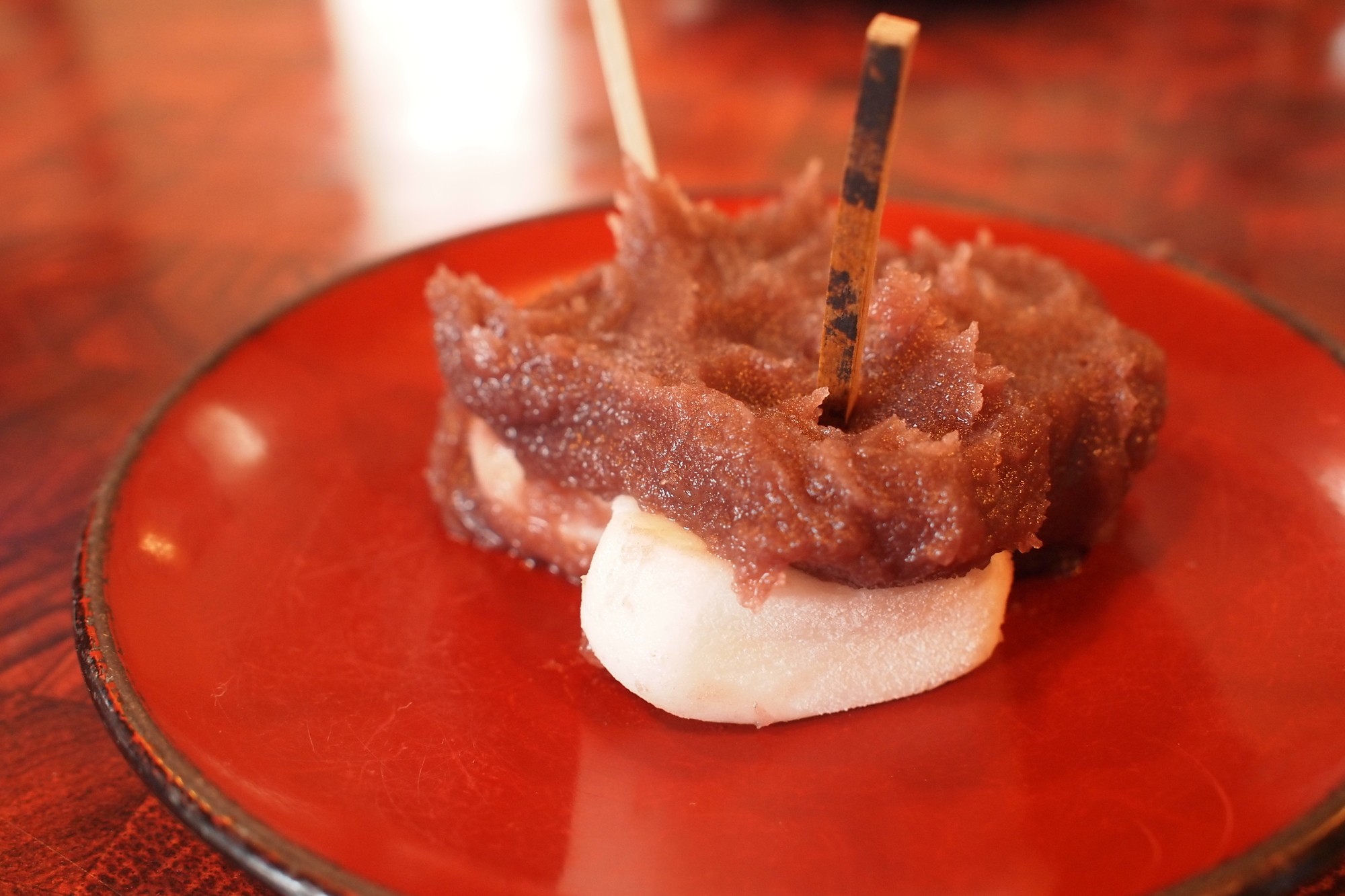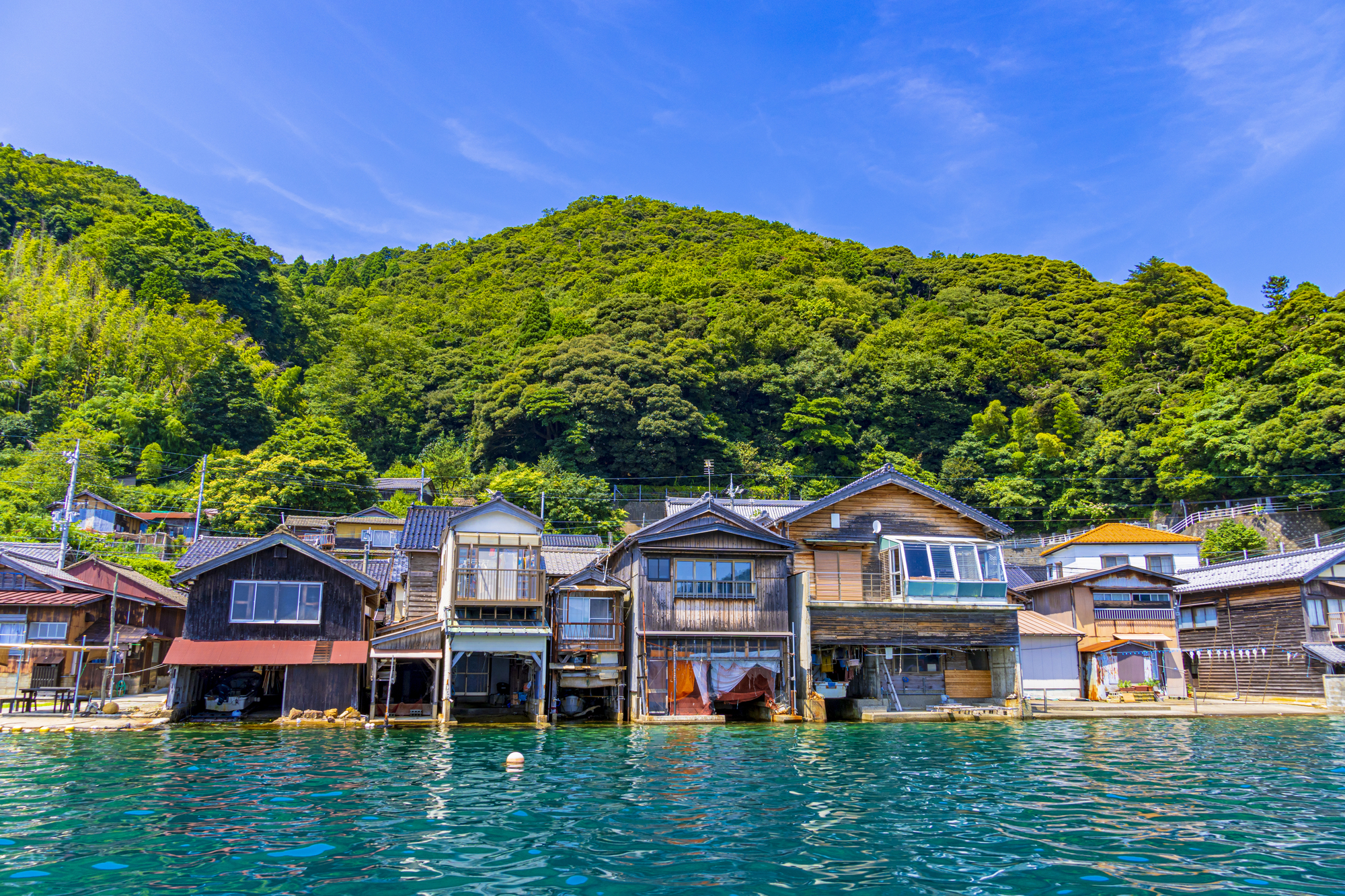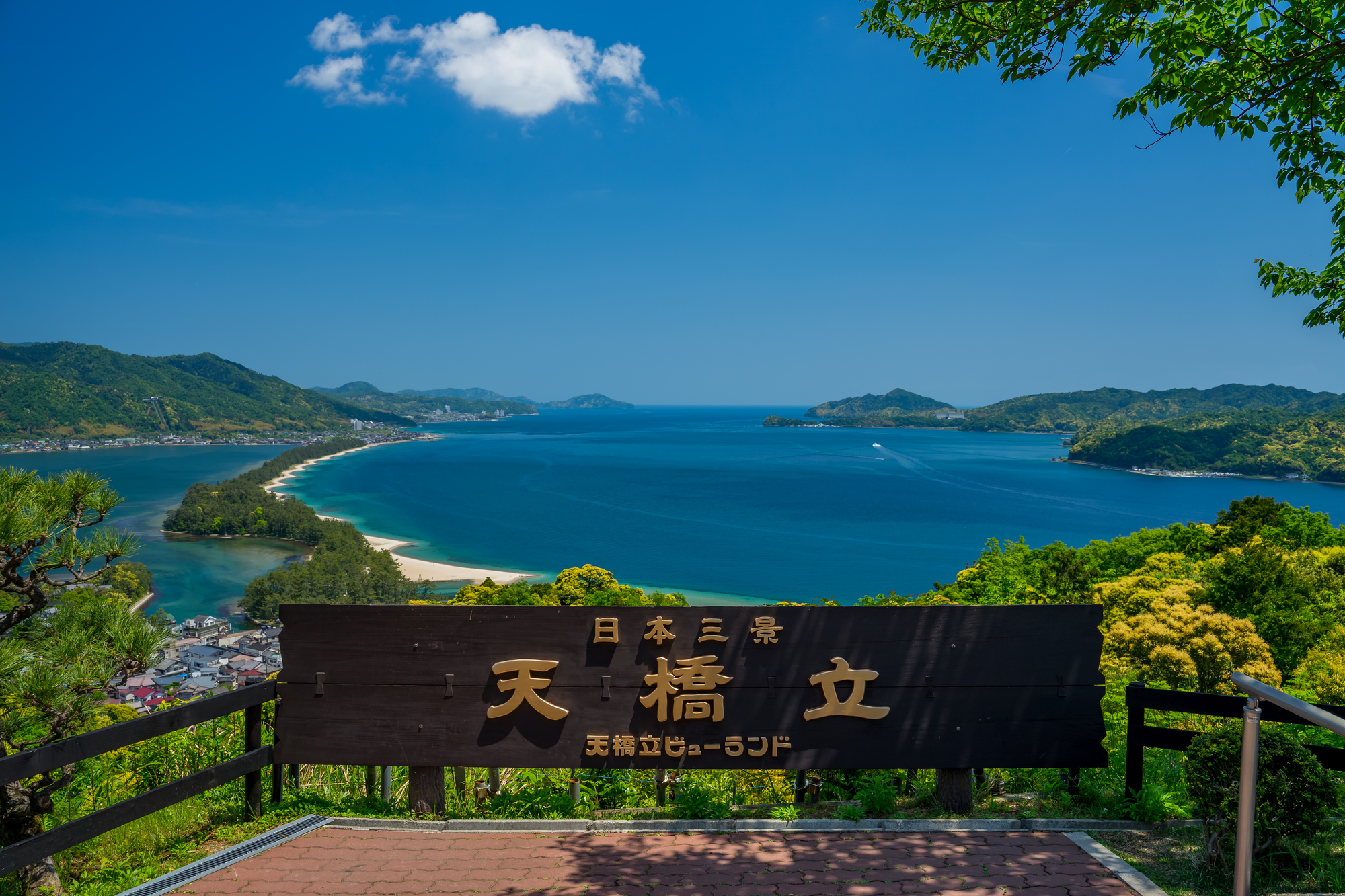Chie no Mochi
Amanohashidate’s Famous “Chie no Mochi” | Complete Guide to Wisdom Sweets at the Four Teahouses
When you travel, you naturally want to try the local specialties and must-eat treats.
Amanohashidate has its own famous sweet that you won’t want to miss.
That is the local specialty “Chie no Mochi”, served at the row of four traditional teahouses,
the Shiken Chaya
(Yoshino Chaya, Hiko-bee Chaya, Kankichi Chaya, and Chitose Chaya), which stand in front of
Chion-ji Temple, famed for the proverb “When three people gather, they have the wisdom of Monju.”
As the name suggests, it’s said that eating these rice cakes will grant you the wisdom of Monju,
making them a sweet with special good fortune.

1. Yoshino Chaya | Elegant, Mildly Sweet “Chie no Mochi”
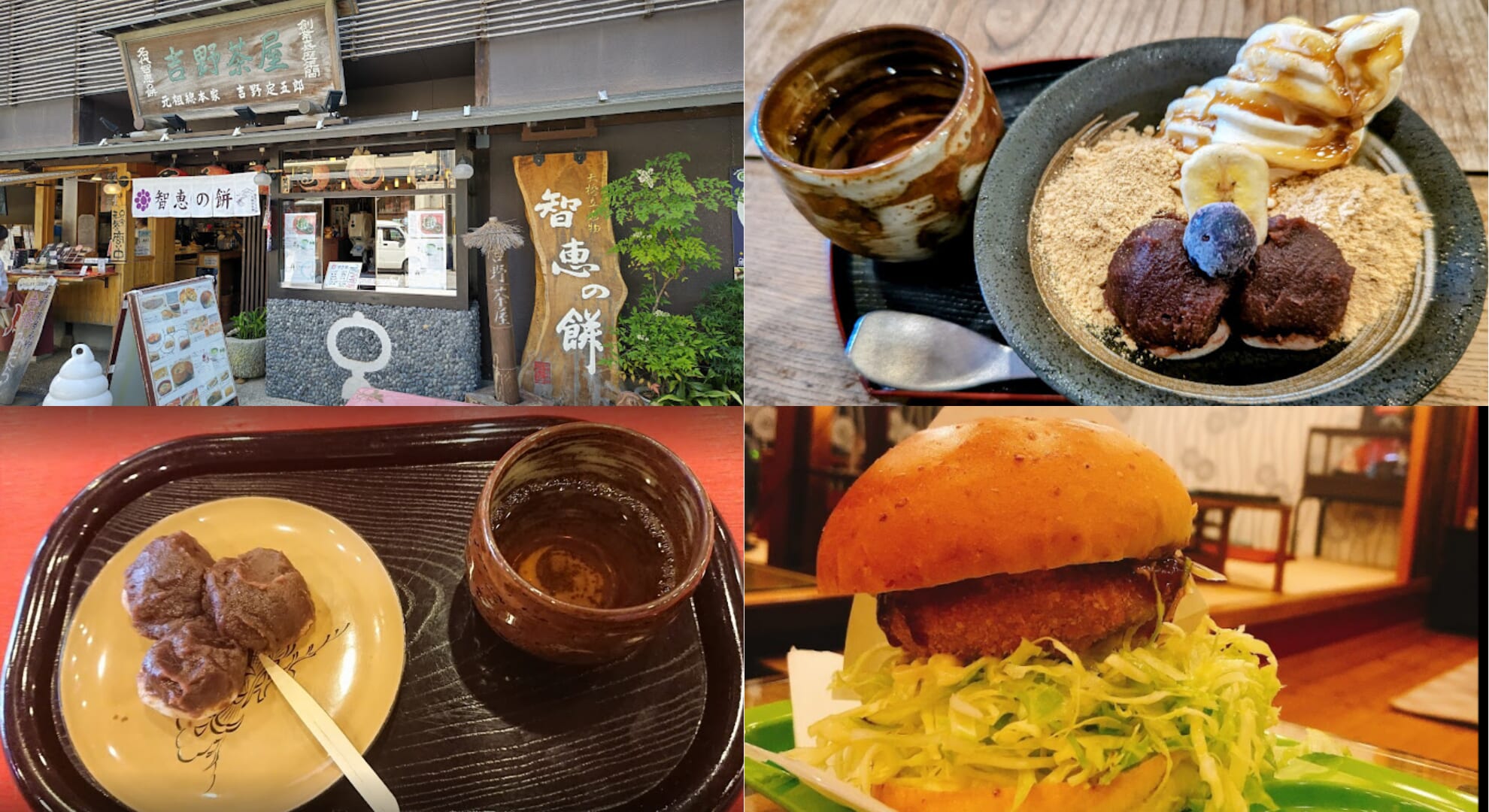
Source: https://maps.app.goo.gl/9MjvN5uH7WN7wHh8A
As you step out through the main gate of Chion-ji Temple, the first teahouse you’ll see is
“Yoshino Chaya.”
The Chie no Mochi here is known for its mildly sweet, refined flavor.
It’s popular because you can really savor the natural taste and texture of the mochi itself.
They also offer original dishes such as a generously filled asari clam croquette burger.
There are arranged versions of Chie no Mochi as well, making this a great spot for those who want to try different variations.
2. Hiko-bee Chaya | Rich Red Bean Paste and Fluffy Mochi
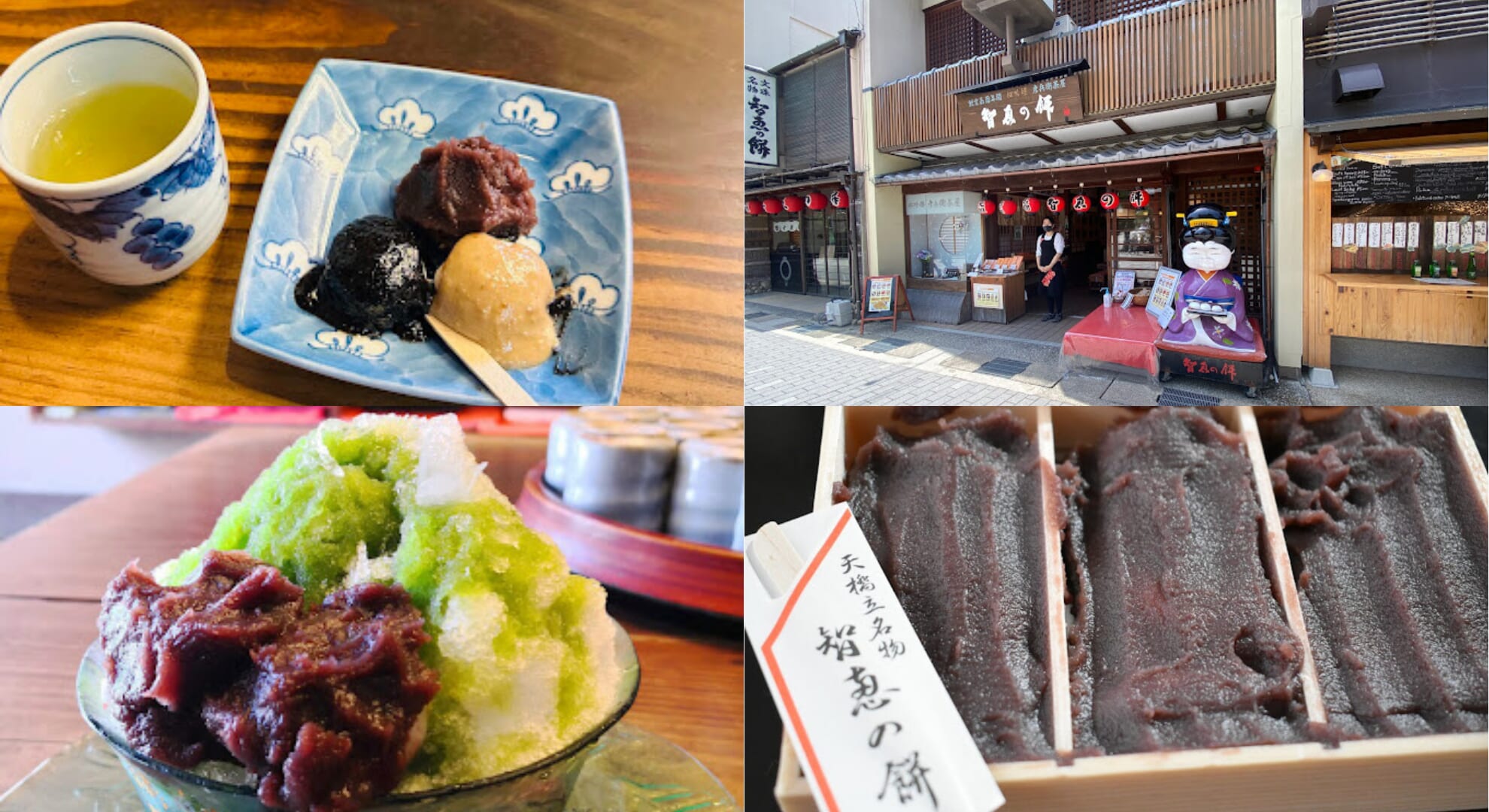
Source: https://maps.app.goo.gl/zajmJP1wSEsjoErQA
Next door to Yoshino Chaya is
“Hiko-bee Chaya.”
Here, you’ll be welcomed by a large doll in traditional Japanese dress, and their Chie no Mochi
is characterized by its slightly darker, richer red bean paste. Be sure to enjoy the soft, fluffy texture of the mochi too.
In summer, their popular item is “Chie-gori”, a matcha shaved ice dessert with two pieces of Chie no Mochi hidden in the bottom.
When you’re tired from sightseeing around Amanohashidate, cool down with a refreshing bowl of Chie-gori.
3. Kankichi Chaya | Enjoy Chie no Mochi by the Hearth

Source: https://maps.app.goo.gl/NgYpGtcaHDR1NxZb8
The third teahouse is
“Kankichi Chaya.”
Inside, you’ll find a traditional irori (sunken hearth)—a rare and charming sight these days.
Their Chie no Mochi, enjoyed while gazing at the irori, has a paler-colored red bean paste with a smooth texture and gentle sweetness.
They also sell Jutaro Mochi, coated with kinako (roasted soybean flour) instead of red bean paste,
as well as the chilled sweet “Chie no Shizuku” and other seasonal limited-edition mochi.
4. Chitose Chaya | A Long-Established Teahouse with Rich Red Bean Paste and Handmade Soba
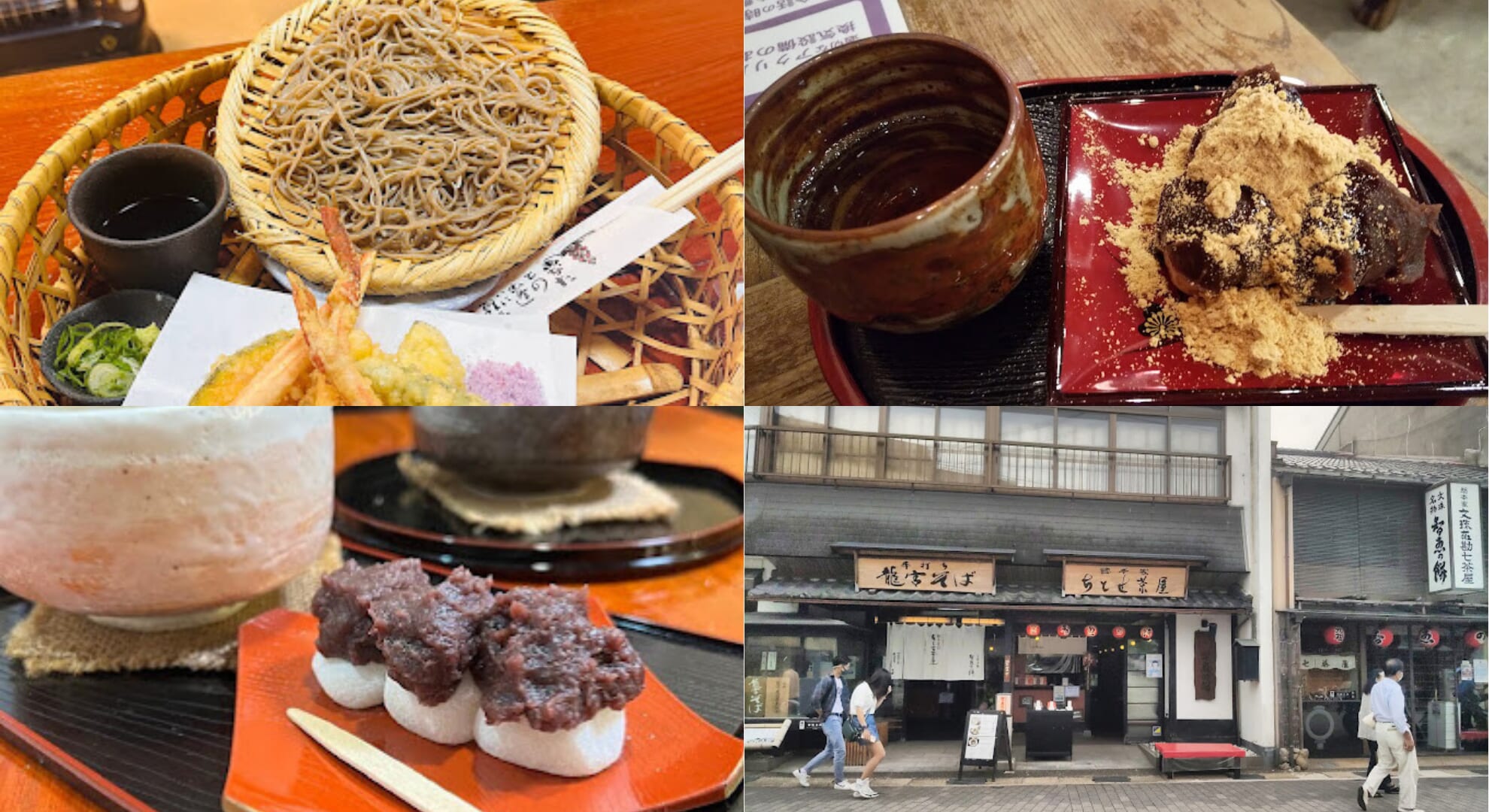
Source: https://maps.app.goo.gl/yMfdzD6eUpYM8hdx7
The last of the four is
“Chitose Chaya.”
Here, the Chie no Mochi
has the darkest-colored red bean paste of all four teahouses.
They proudly preserve a traditional flavor that lets you fully enjoy the natural taste of the azuki beans,
and they are particular about using 100% locally grown glutinous rice.
You can also enjoy delicious soba noodles, made with buckwheat from Tsutsukawa in Ine Town and hand-crafted by artisans in a 20:80 ratio.
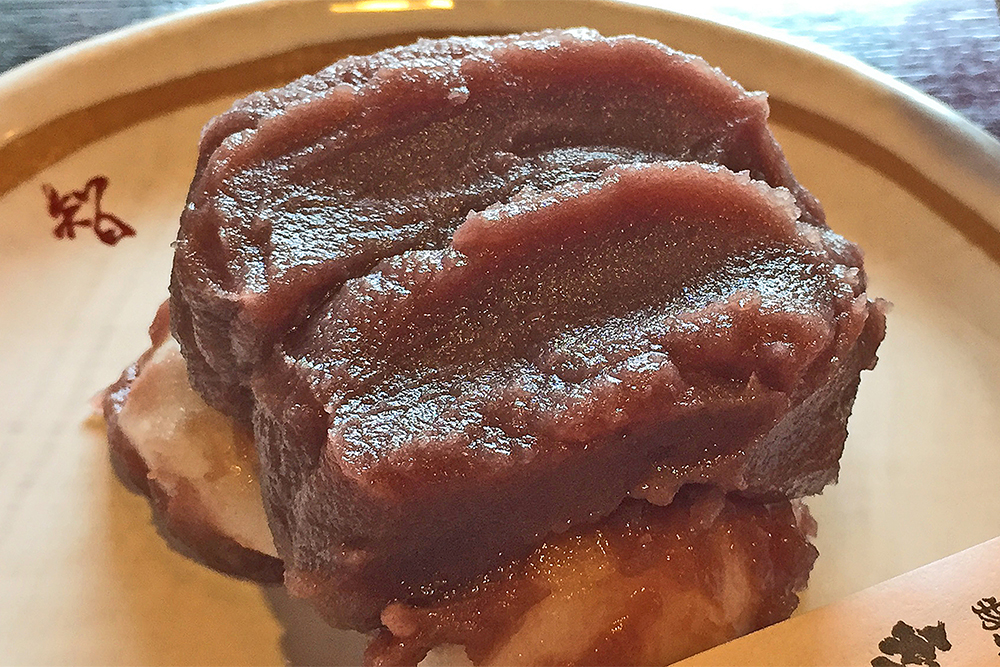
The sweetness of the red bean paste and the softness of the mochi vary from teahouse to teahouse, each with its own character.
Which “Chie no Mochi” are you most curious to try?
When you visit Chion-ji Temple, why not sample and compare the carefully crafted flavors at each of the four teahouses?
![Chie no Mochi、Auberge Villa offers the finest cuisine in a private villa that can be rented out freely. [Best Rate Guarantee]](https://en.auberge-soso.com/wp-content/themes/hoshioto2020/images/common/logo_blk.svg)
